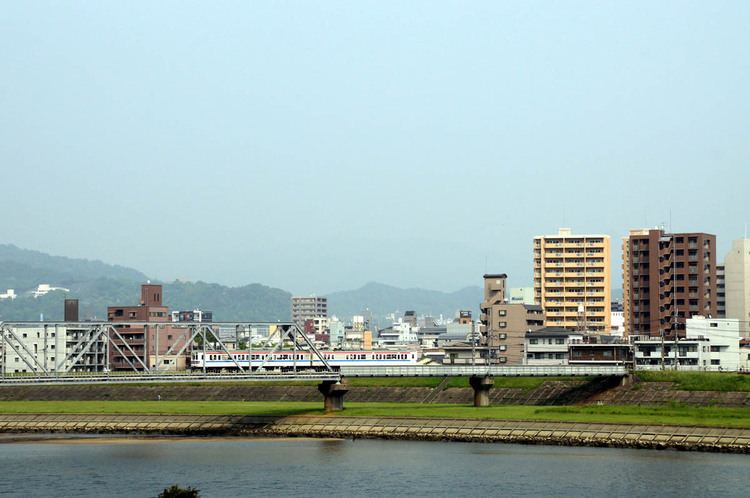Opened 1909 | Stations 12 Line length 14.0 km (8.7 mi) | |
 | ||
Terminis Yokogawa Station, Kabe Station | ||
The Kabe Line (可部線, Kabe-sen) is a railway line operated by West Japan Railway Company (JR West) within the city of Hiroshima in Japan. It connects Hiroshima Station and Kabe Station in Asakita-ku. The actual junction station is Yokogawa. It is one of the commuter lines to Hiroshima.
Contents
- Japan railway kabe line
- Route data
- Private railway
- After nationalization
- Discontinuedsuspended section
- Stations
- Rolling stock
- References
Japan railway kabe line
Route data
Private railway
The section now in operation of the Kabe Line was originally constructed by a private company and later purchased by Japanese Government Railways.
The section was opened by Dainippon Kidō in four phases.
The line was handed over to Kabe Kidō on March 11, 1919. Kabe Kidō was merged to Hiroshima Denki Kidō on May 1, 1926.
The line was originally built to 762 mm (2 ft 6 in) gauge and not electrified. The line was electrified and re-gauged (to the national standard of 1,067 mm (3 ft 6 in)) in the following steps.
The line was handed over to the Kōhin Railway on July 1, 1931. On December 1, 1935, the line's legal status was changed from light railway to railway.
After nationalization
The line was nationalized on September 1, 1936, and became a part of Japanese Government Railways as the Kabe Line. Simultaneously, some station names were changed as follows:
The line voltage was raised from 750 V to 1,500 V (JNR standard) on April 23, 1962.
Since September 4, 1968, the line had been on the government's list of deficit-ridden railways where service was to be discontinued.
After JR West took over the line in 1987, wanman driver-only operation was introduced on the Kabe – Sandankyō section.
Beginning in summer 2007, the ICOCA card can be used in all stations in the Hiroshima City Network, including all stations on the Kabe Line.
On 4 February 2011, it was announced that a 1.6 km section of the abandoned segment, between Kabe Station and the former Kōdo Station, would be electrified and reopened. This will be the first such reopening by a JR Group company since the privatization of Japanese National Railways (JNR). Operation is scheduled to resume from fiscal 2015.
Discontinued/suspended section
JGR extended the line beyond Kabe Station. The extended sections were not electrified.
The line was intended to be extended to Hamada station on the Sanin Main Line, and construction on that section commenced in 1974, before being abandoned in 1980.
The Kabe – Sandankyō section was closed on December 1, 2003.
Stations
Trains can pass at stations marked "||", "◇", "∨", and "∧". Trains cannot pass at stations marked "|".
Rolling stock
New 2- and 3-car 227 series electric trains are scheduled to be introduced on the Kabe Line from around 2015, replacing older 115 series trains.
